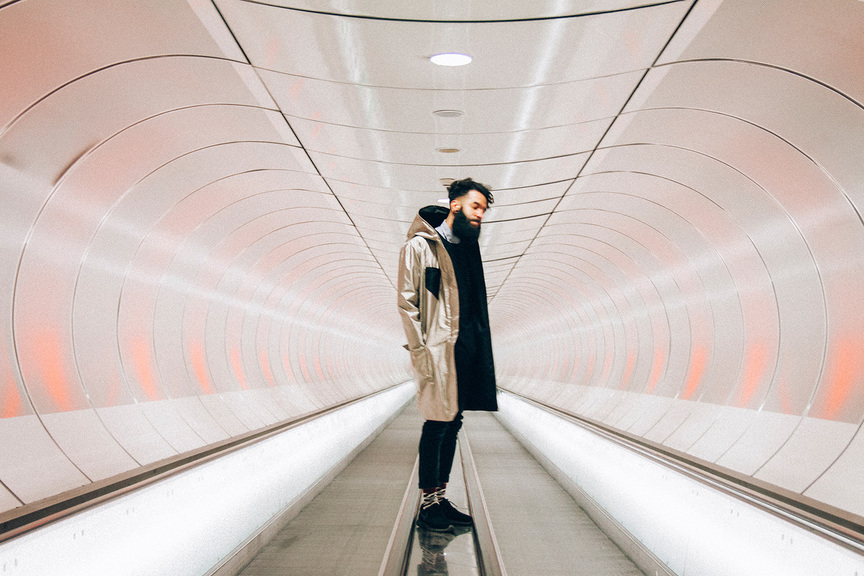-
From Current Issue
-
- Editor’s Letter Fire in the Heart
- Reviews I Gusti Ayu Kadek Murniasih
- Reviews 11th Seoul Mediacity Biennale: “One Escape at a Time”
- Dispatch Networked China
- One on One Monira Al Qadiri on Yukio Mishima
- Essays The rise of independent art spaces in pandemic-era Shanghai
- Features Tuan Andrew Nguyen
- Table of Contents
- Web Exclusives
- Archive
- Subscribe

R
E
V N
E
X
T
Is the relationship between humans and technology growing increasingly antagonistic? As we look back on the 2010s, many of the decade’s developments proved to be more troubling than triumphant—artificial intelligence used for mass surveillance in both the real world and online; the chemical poisoning of the human body from the proliferation of plastics; and the degradation of the natural world, from mass species extinction to environmental pollution and climate change. We’re at a moment when humans, along with the rest of the planet, need to be protected from many of the technologies we created.
The Ars Electronica exhibition at Hyundai Motorstudio Beijing, “Human (Un)limited: Between Human Limitations and Limited Humanity,” co-curated by Martin Honzik, senior director of Ars Electronica, and Fei Jun, professor of the Art + Technology program at the School of Design at Beijing’s Central Academy of Fine Art, wrestled with this question of humanity’s search for realization and identity in a world that is increasingly shaped and influenced by itself. Many of the show’s 16 exhibits attempt to solve problems created by technology, such as Leon Baauw and Marcha Schagen’s Project KOVR (2016), a jacket made of metalliferous fabrics that insulate the wearer from radio waves and radiation, and disrupt tracking signals from the devices we carry. In a similar vein, Bjørn Karmann and Tore Knudsen’s Project Alias (2019) is a digital parasite that paralyzes smart home devices (like Amazon Echo or Google Nest) with gray noise so they can’t listen to us all the time. Youyang Song’s Cooking New Materials (2019) addresses another peril of our consumer age, by using organic waste from the food industry to make leather-like materials that could be used as biodegradable packaging in lieu of plastic.
Beyond hacks to rescue us from our own inventions were more speculative projects that reflect on the ontological paradoxes of technology. Qiu Yu’s Mechanically controlled eyes see the controlled eyes in the mirror looking back (2019) is, as the title indicates, a device with an image of a human eye reacting to its own reflection in a mirror. Fei Jun’s Interesting World, Installation 2 (2019) uses AI to recognize objects and visitors standing in front of it, and by categorizing the objects and using semantic relations, finds related objects and locations on a virtual-earth program , as if demonstrating associative thinking. Shaun Hu’s Internet of Everything: All Connections (2018) transmits the bio-electricity of the human body, measured from the artist standing in a transparent plastic orb, through a seven-part chain of items around the world—from bacteria to a laser-cut record to Bluetooth speakers under the sea—back to a mini greenhouse of mimosa plants, illustrating the transfer of energy through mechanical, digital, and biological processes.
While the idea of employing more technology to fix problems created by technology seems like a philosophical pitfall, for many people, and particularly for industries that will capitalize on new developments, there is no reason to regress. Maja Smrekar’s project !brute_force (2019) offered an interesting corrective take on the anthropocentric universe by trying to create an artificial neural network co-programmed by dogs, offering “an alternative ontological window of knowledge about hybridity in life.” Cindy Hsin-Liu Kao’s DuoSkin (2016), developed at the MIT Media Lab with Microsoft Research, is a kit resembling metallic tattoos that might become on-skin electrical circuits or touch-controls for networked devices. While techno-positivism can border on the utopian, even critically-minded new technology ultimately feeds a system whose workings were largely unmentioned in the exhibition: the global economy.
“Human (Un)limited: Between Human Limitations and Limited Humanity” is on view at Hyundai Motorstudio Beijing until February 29, 2020.
To read more of ArtAsiaPacific’s articles, visit our Digital Library.




















